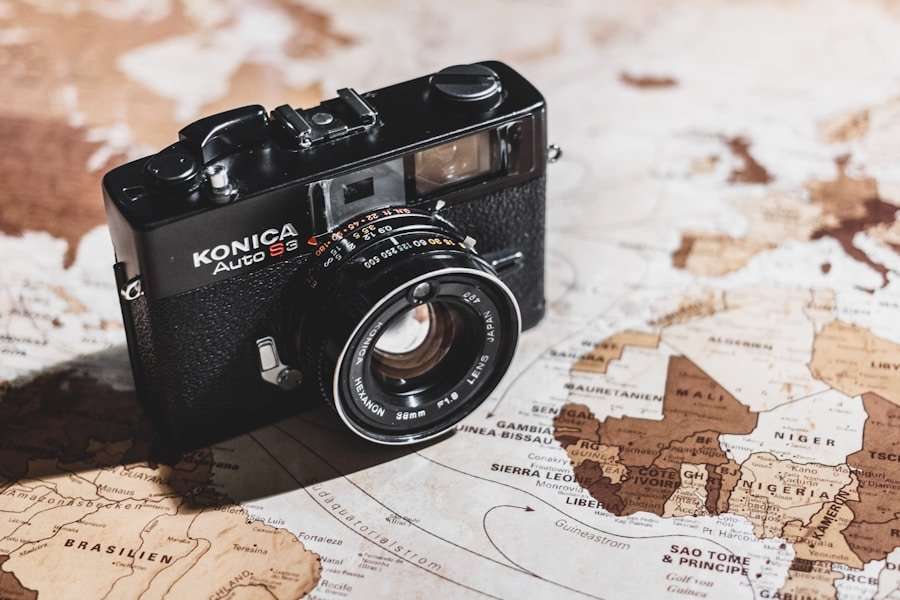Camera technology has come a long way since the invention of the first camera obscura in the 11th century. From the early days of film photography to the digital revolution, cameras have evolved to become powerful tools for capturing moments and unleashing creativity. Today, the latest advancements in camera technology have opened up a whole new world of possibilities for photographers and videographers alike. With features such as high-resolution sensors, advanced autofocus systems, and innovative image processing algorithms, modern cameras are capable of producing stunning images and videos like never before.
Understanding the Latest Features in Camera Technology
One of the most exciting developments in camera technology is the rise of mirrorless cameras. These cameras have done away with the traditional mirror and optical viewfinder found in DSLRs, allowing for more compact and lightweight designs. Mirrorless cameras also boast features such as electronic viewfinders, in-body image stabilization, and silent shooting modes, making them ideal for both still photography and video recording. Another key advancement is the integration of artificial intelligence (AI) into camera systems. AI-powered features like subject recognition, scene detection, and automatic image enhancement have made it easier than ever for photographers to capture stunning shots with minimal effort.
Exploring the Impact of New Camera Features on Creativity
The latest advancements in camera technology have had a profound impact on creativity in photography and videography. With high-resolution sensors and improved low-light performance, photographers can now capture intricate details and vibrant colors in even the most challenging lighting conditions. Advanced autofocus systems have also made it easier to track moving subjects and maintain sharp focus, opening up new possibilities for action and sports photography. Additionally, the integration of AI into camera systems has streamlined the editing process, allowing photographers to spend less time on post-processing and more time on capturing moments.
Unleashing Creativity with Advanced Camera Functions
The advanced functions found in modern cameras have empowered photographers to push the boundaries of their creativity. For example, the ability to shoot in high-speed burst modes has made it possible to capture split-second moments with precision, while advanced image stabilization technology has enabled photographers to experiment with long exposure shots without the need for a tripod. Furthermore, the integration of advanced metering and exposure control systems has given photographers greater control over their images, allowing them to achieve the perfect balance of light and shadow in their shots.
Tips and Tricks for Utilizing New Camera Features
To make the most of the latest camera features, photographers should familiarize themselves with their camera’s settings and capabilities. Experimenting with different shooting modes, such as aperture priority, shutter priority, and manual mode, can help photographers gain a deeper understanding of exposure and depth of field. Additionally, learning how to use advanced autofocus modes and tracking features can greatly improve the accuracy and speed of capturing moving subjects. Finally, taking advantage of AI-powered features like automatic scene detection and subject recognition can help photographers streamline their workflow and focus on capturing the moment.
Case Studies: How Photographers are Leveraging New Camera Technology
Many professional photographers have embraced the latest advancements in camera technology to elevate their work to new heights. For example, wildlife photographers have used advanced autofocus systems to track fast-moving animals with precision, while landscape photographers have taken advantage of high-resolution sensors to capture intricate details in vast landscapes. Wedding photographers have also benefited from the low-light performance of modern cameras, allowing them to capture intimate moments in dimly lit venues without sacrificing image quality. Additionally, videographers have leveraged the silent shooting modes and in-body image stabilization of mirrorless cameras to capture smooth and immersive footage.
The Future of Camera Technology and its Potential for Creativity
As camera technology continues to evolve, the future looks bright for photographers and videographers seeking to unleash their creativity. Advancements in sensor technology, image processing algorithms, and AI integration will likely lead to even more powerful and intuitive camera systems in the years to come. Additionally, the rise of computational photography, which combines hardware and software to enhance image quality, will open up new possibilities for creative expression. With these developments on the horizon, photographers and videographers can look forward to pushing the boundaries of their artistry and capturing moments in ways that were once thought impossible.








